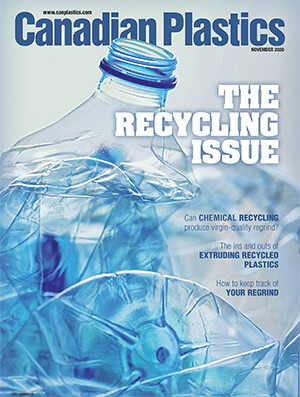
Plastics industry profile: Nova Chemicals’ Bobbi Liebrecht
Canadian Plastics
Canadian Plastics In-Depth Materials Women in ManufacturingAfter more than 22 years with Nova, the company's manufacturing West process and technology leader looks back on her career, and ahead on the growing role of women in plastics.

Photo Credit: Nova Chemicals Corp.
Canada’s chemicals and plastics sectors are changing pretty rapidly these days – single-use product bans, “toxic” designations, new work-from-home policies, and more – but a few of the older traditions are still in place. Like remaining at one company, for instance, and working your way up.
A classic example is Bobbi Liebrecht, currently the manufacturing West leader of process and technology with Calgary-based Nova Chemicals Corp. A 1999 graduate of the University of Alberta with a Bachelor of Science in Chemical Engineering, Liebrecht was recruited by Nova through the university’s career centre. “Through the interviews and site tours, I was struck by Nova’s ‘Responsible Care’ strategy, the cleanliness of the facilities, and the wide range of opportunities for engineers at one of the largest ethylene and polyethylene [PE] manufacturing sites in the world,” she said.
MOVING ON UP
Liebrecht started at Nova as a process engineer supporting operations and design implementation of facility changes – and was involved in some big decisions right out of the gate. “I was part of a technical team that commissioned, started up, and optimized a new PE plant built during Nova’s 2000 expansion of its manufacturing facility in Joffre, Alberta,” she said. “I spent 13 years in various engineering and technical roles on the site before moving into my first leadership role as a team leader for process engineering for olefins, utilities, and pipeline; and I then worked in operations, business integration, and engineering management, and was appointed to my current role as a site leader for process and technology in December 2020.”
Along the way, Liebrecht was also part of the team that started up a second PE plant utilizing Nova’s advanced Sclairtech technology that diversified the company’s product portfolio. “These products allowed us to enter new markets and test the boundaries of our existing PE technology knowledge,” she said. “During this time, I coauthored a patent that’s still actively in use today.”
And, inevitably, Liebrecht has also learned a thing or two the hard way. “Early in my career, I engineered a solution to a plant problem that wasn’t implemented by leadership, and I quickly moved to the proposed implementation of a solution that was theoretically accurate but costly and complex to operate,” she said. “I remained very passionate about solving the problem this one way and was frustrated and disappointed when the solution was rejected, but I reworked the problem description to consider operating cost in addition to initial capital cost, ease of maintenance, and reduced operational complexity post-implementation as requirements of the redesign.” The lessons being? “I learned to broaden my approach by soliciting design requirements and policy statements from key stakeholders and end users early on in order to clearly define a problem before working on solutions,” she said. “In addition, I now consider that there may be more than one way to technically solve a problem, and to always consider those that will be operating and maintaining the system long after I’ve implemented an engineering change.”
Teachable moments aside, Liebrecht says, another big positive of her career is having been able to try a variety of roles in different areas of Nova’s business. “This has further developed my process knowledge, from the introduction of ethane feed to the site all the way through the process to conclude with development, manufacturing, and delivery of sustainable product to market,” she said. “I love to solve complex problems using innovation, team diversity, strong technical principles, and robust data.”
THE BIGGER PICTURE
Spending more than 22 years with one company definitely doesn’t mean that Liebrecht – or anyone else with a similar career arc – is insulated from what goes on outside that company, least of all from the growing movement nowadays to bring more women into the plastics sector. “I believe there’s still more to do to continue to draw in more women,” she said. “First, the debiasing of our hiring, retention, and promotion processes, and challenging conscious and unconscious bias in general; second, providing robust role models, sponsors, and mentors; and finally, developing flexibility in how work is completed to promote diversity, wellness, and a healthy life balance.”
And for young women starting out today in the plastics/chemical industry, Liebrecht’s advice is to stay true to who they are and confident in what they believe in. “Your voice is of critical importance for continuous improvement and evolution of our industry, so let others hear it,” she said. “Recognize that there’s so much opportunity to produce plastics products that are both essential to everyday life and sustainable.”
